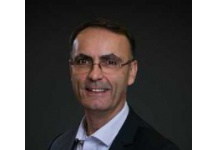The Art of Artificial, A Love of Logic

- Marc Torrens, Chief Innovation Officer and co-founder at Strands
- 03.08.2017 03:30 pm Artificial Intelligence , Marc Torrens co-founded Strands in 2003 and is serving as Chief Innovation Officer. He has published more than 20 referred papers on his work in international conferences, and journals on artificial intelligence and usability. Marc also lectures on the principles of Recommendation Engines for the Master in Business Analytics and Big Data at IE Executive Education.
Co-founding Strands came as a natural next step for me after a degree in computer science from the Technical University of Catalonia (UPC) and a PhD in Artificial Intelligence from the EPFL in Switzerland.
Prior to setting up Strands with Francisco Martin in the US, Professor Boi Faltings and I had co-created and sold a company using AI for travel planning, which at the time was a huge step in innovation.
Whilst studying computer science, I discovered that logic is a mathematical tool that allows computers to model the world with symbolic programming, to solve real world problems that require some degree of intelligence, such as planning and reasoning.
I could see that these algorithms had huge potential, so I decided to base my PhD thesis on that topic. It was with Strands that I was able to delve deeper into Machine Learning with a view to developing our Recommender Systems.
On a personal level, one of the biggest discoveries for me has been the power that the combination of technological knowledge and an in-depth understanding of industry needs actually has. It is not merely about being an expert in a given field, but also about knowing how to serve business with that expertise.
AI enables Strands to do a couple of things for the banking industry. First, we can gain insights about bank customers so that banks themselves can understand their customers better. We can help with the rest. i.e., making these insights into tangible, actionable next steps. Once you know your customer, you can start recommending bespoke solutions. If you can do it without the customer knowing or needing to do anything, better still. The future of FinTech is about building decentralised systems to provide a superior user experience. In this scenario, financial services will run in the background, creating what we call invisible banking. We are seeing now that bank branches are disappearing, and I believe online banking channels will also disappear as they are conceived nowadays.
“Barely-There” Banks and The Benefits
Banks have a huge amount to gain from Artificial Intelligence and the insider knowledge it gives them. They are unlikely to feel ready to renounce engagement with their customers, but the reality is, that this new relationship with the end-user is far more beneficial to all parties involved. The previous model did not allow for banks to anticipate their customer’s next moves and be one step ahead of them. By knowing them, you’re doing more than just selling financial products – you’re offering solutions and improving their financial life.
Strands is often referred to as “the FinTech partner for banks”, which to my mind is the best way forward. In this complex and fast-paced world it is very hard, or impossible, to be good at everything. Banks can partner with the best technology companies to keep up the pace. The advantage for banks who work with Strands is that they are benefiting from our experience of working around the world with many top banks and a long-term partnership, not just a one-stop implementation. This is key to a relationship that works, in our experience working with international financial institutions.
The ideal banking experience is one that goes almost entirely unnoticed, that works for you in the background. People do not want anything from banks but to be financially safe. They don’t worry about the banking experience itself, but rather their specific situation and financial issues, meaning that the more the bank can do behind the scenes, the better.
This post originally appeared on blog.strands.com
























